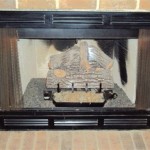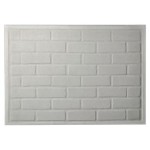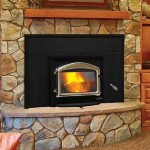Stone Veneer Fireplace Cost: A Comprehensive Guide
A fireplace serves as a focal point in many homes, offering warmth and aesthetic appeal. While traditional masonry fireplaces are renowned for their durability and authentic appearance, they can be costly and complex to install. Stone veneer provides an alternative, offering a similar aesthetic at a potentially lower cost and with a simpler installation process. This article provides a comprehensive exploration of the costs associated with building a stone veneer fireplace, covering various factors that influence the overall expense.
Understanding the Components of Stone Veneer Fireplace Cost
The total cost of a stone veneer fireplace is composed of several key components. These components encompass materials, labor, the fireplace insert itself, and any necessary permits or inspections. A clear understanding of these elements allows for a more accurate budget planning process.
Material Costs: The selection of stone veneer dictates a significant portion of the material costs. Stone veneer is available in a wide range of styles, colors, and materials, each with varying price points. Natural stone veneer, often quarried and cut into thin pieces, generally carries a higher price tag compared to manufactured stone veneer, which is a composite material designed to replicate the look of natural stone. Other necessary materials include mortar, backing materials (such as cement board or a similar substrate), metal lath for reinforcement, and possibly flashing to prevent water damage if the fireplace is located on an exterior wall.
Natural stone veneer offers a unique, authentic appearance, with variations in color and texture that cannot be perfectly replicated. This natural variation contributes to its appeal but also to its higher cost. The cost can fluctuate based on the rarity and availability of the specific stone type. Manufactured stone veneer, on the other hand, provides more consistency in appearance and is typically lighter in weight, simplifying installation. It is also often more readily available, contributing to its lower cost.
Labor Costs: The cost of labor is significantly influenced by the complexity of the project and the experience of the installer. A simple, straightforward installation on a pre-existing fireplace structure will generally have lower labor costs than a complex design requiring extensive framing or modifications. The installer's experience also plays a crucial role. Experienced installers are likely to complete the project more efficiently and with a higher level of craftsmanship, but their services typically command a higher rate. Obtaining multiple quotes from qualified contractors is essential to determine a reasonable labor cost for the specific project.
Fireplace Insert Costs: The choice of fireplace insert significantly impacts the overall cost. Fireplace inserts are available in a variety of fuel types, including wood-burning, gas, and electric. Wood-burning inserts are generally the least expensive upfront, but ongoing costs associated with wood acquisition and storage need to be considered. Gas inserts offer convenience and consistent heat output, while electric inserts provide a relatively simple and clean heating option. The cost of the insert itself can range from a few hundred dollars for a basic electric model to several thousand dollars for a high-efficiency gas or wood-burning insert.
Permit and Inspection Costs: Depending on local building codes, permits and inspections may be required for the installation of a stone veneer fireplace. These costs can vary significantly depending on the location and the scope of the project. It is crucial to verify local requirements and factor these costs into the budget. Failure to obtain necessary permits can result in fines and delays.
Factors Influencing Stone Veneer Fireplace Cost
Several factors beyond the basic components can influence the overall cost of a stone veneer fireplace project. These factors encompass the size and complexity of the design, the location of the fireplace, any necessary structural modifications, and the quality of the materials used.
Size and Complexity of the Design: A larger fireplace with an intricate design will naturally require more materials and more labor, increasing the overall cost. Complex features, such as arches, mantels, or custom stonework, add to the time and effort required for installation. A straightforward, rectangular fireplace design will generally be less expensive. The height and width of the stone veneer application area directly influence the amount of veneer material needed. Detailed designs require more precise cuts and fitting, which can increase labor hours.
Location of the Fireplace: The location of the fireplace, whether indoors or outdoors, can affect the cost. Outdoor fireplaces may require additional weatherproofing and structural considerations, increasing the overall expense. Indoor fireplaces may require modifications to existing walls or framing, depending on the design and the existing structure. Accessibility to the location can also impact labor costs, as difficult access may require more time and effort to transport materials and equipment.
Structural Modifications: If the existing structure requires modifications to accommodate the fireplace insert or the stone veneer, this can add significantly to the overall cost. Structural modifications may include reinforcing walls, adding framing, or altering the existing chimney. These modifications require specialized skills and expertise, which can increase labor costs. A structural engineer may need to be consulted to ensure the safety and integrity of the modifications.
Quality of Materials: Opting for higher-quality stone veneer and other materials will naturally increase the cost, but it can also improve the longevity and appearance of the fireplace. Higher-quality stone veneer is typically more durable and resistant to weathering, requiring less maintenance and lasting longer. Using premium mortar and backing materials can also contribute to the overall durability and stability of the fireplace. Lower-quality materials may be more susceptible to damage and require more frequent repairs or replacement, ultimately costing more in the long run.
Cost Estimation for Stone Veneer Fireplace Installation
Providing a precise cost estimate for a stone veneer fireplace is challenging without specific details about the project. However, general estimates can be provided based on typical ranges for materials and labor. These estimates provide a starting point for budgeting and planning.
Material Costs Estimate: The cost of stone veneer can range from $5 to $15 per square foot for manufactured stone veneer and $15 to $30 per square foot for natural stone veneer. Other materials, such as mortar, backing, and metal lath, typically add an additional $2 to $5 per square foot. For a fireplace requiring 100 square feet of stone veneer, the material costs could range from $700 to $3500, depending on the type of stone and the other materials used.
Labor Costs Estimate: Labor costs for stone veneer installation typically range from $30 to $75 per square foot, depending on the complexity of the design and the experience of the installer. For a 100-square-foot fireplace, labor costs could range from $3000 to $7500. This estimate does not include the cost of installing the fireplace insert itself, which may add an additional $500 to $1500, depending on the fuel type and complexity of the installation.
Total Cost Estimate: Based on these estimates, the total cost of a stone veneer fireplace could range from $3700 to $11,000 or more. This range is a general guideline and can vary significantly depending on the specific factors outlined above. Obtaining multiple quotes from qualified contractors is essential to get a more accurate estimate for a specific project. These quotes should include a detailed breakdown of material and labor costs, as well as any additional fees for permits or inspections.
Cost-Saving Strategies: There are several strategies to potentially reduce the cost of a stone veneer fireplace project. These strategies include opting for manufactured stone veneer instead of natural stone, choosing a simpler design, and performing some of the work, such as demolition or cleanup, independently. Careful planning and comparison shopping can also help to minimize costs. Consider purchasing materials during sales or from discount suppliers. Obtain multiple quotes from different contractors to compare prices and services. Prioritize essential features and consider postponing less critical elements to a later phase if budget constraints exist. Thoroughly researching and carefully planning each aspect of the project can lead to substantial cost savings.
Ultimately, the cost of a stone veneer fireplace is a multifaceted calculation influenced by material choices, design complexity, and labor expenses. By understanding these various factors, homeowners can effectively budget and plan for a fireplace installation that aligns with their aesthetic preferences and financial considerations.

2024 Stone Veneer S How Much Does Cost Per Square Foot
2024 Stone Veneer S How Much Does Cost Per Square Foot

Real Stone Veneer River Rounds Stonewood S

How Much Does Stone Veneer Cost

What Is The Cost Of Stone Veneer

Stone Veneer Fireplace Surround Marble Fountain Sculpture Statue 86 18031122557 Js Bluesea S

Cost Of Stone Fireplaces Marble Com

Natural Stacked Stone Veneer Fireplace Ideas

Seattle S Top Value Home Remodel Project Stone Veneer Mutual Materials

Stone Veneer Fireplace Cost Marble Fountain Sculpture Statue 86 18031122557 Js Bluesea
Related Posts








